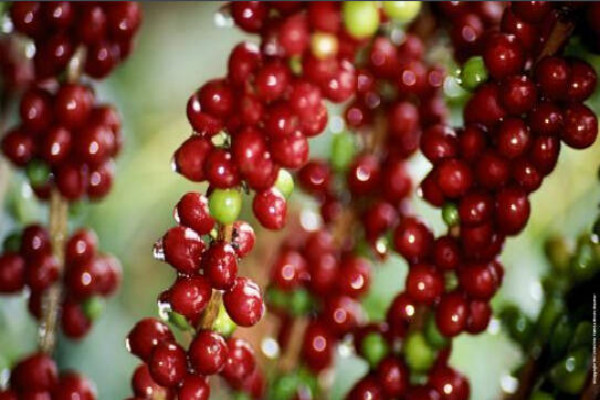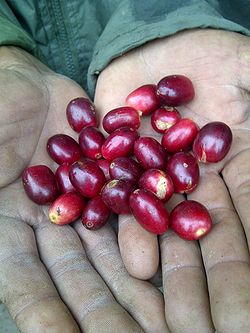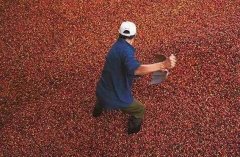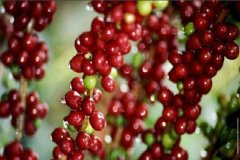Introduction of Sidamo Water washing Honey G1 hand washing parameters, temperature, Grinding degree, Powder / Water ratio
For professional baristas, please follow the coffee workshop (Wechat official account cafe_style)

Honeyed words of the hand. 15g powder, medium fineness grinding (small Fuji ghost tooth cutter 3.5grinding), v60 filter cup, 91mi 93 degrees water temperature, first water injection 30g water, carry on steaming for 27 seconds, injection to 105g water cut off, wait for powder bed water to half, then water injection, slow water injection until 225g water volume, no water powder ratio at 1:15, extraction time at 2:00
Washing: Grade-1;Grade-2 (G1 > G2)
Sun: Grade-1 and Grade-3--Grade-5 (G1 > G3 > G4 > G5)
Producing area: Oromia, Ethiopia
Varieties: Ethiopian native species
Haiba: 2000
Treatment: washing
Various forms of coffee cultivation can be found in Ethiopia: everything from wild coffee forests and semi-developed land to traditionally operated plots to modern plantations. About 50% of the coffee is grown more than 1500 meters above sea level. According to the above four different modes of production, Ethiopian coffee can be divided into nine major coffee producing areas, including five boutique coffee areas: Sidamo, Yegashefi, Harald, Lim and Lekampu. and four general commercial bean producing areas: Gemma, Irugbo, Tibby and Bekaa. The sun or water washing methods are used in each district, and different treatment methods also affect the flavor. At present, the sun method accounts for about 80%, and water washing accounts for about 20%.
In this micro-batch coffee, 100% Red Cherry was selected by hand, then the peel and pulp was removed by Agared equipment, and then the coffee beans with pectin were fermented in a fermentation tank for 36 hours, then Souking for 4 hours, dried in a drying bed with a size of 30 to 1.8 meters, and then shelled. After manual screening, they were packed in GrainPro bags and covered with gunny bags.
The Oromia region is one of the sources of coffee in the world, and its native Oromo is the first person in the world to use coffee as a food, dating back to the 5th century AD. Oromia is located at about 3-15 degrees north latitude and 33-40 degrees longitude. The region is famous for its primordial plant species and species diversity. This is where coffee was born. For the local Oromo people, coffee is their drink, their food, an important part of their trade, a local "stimulant" and an important tool for safeguarding peace.

Flavor description:
Obvious wild ginger and bergamot, with notes of blackcurrant, sweet aftertaste of raisins, and overall flavor reminiscent of Earl black tea
Coffee beans in Ethiopia are graded according to the proportion of defective beans. Indonesian beans are mainly divided into six grades, namely G1--G6. Ethiopia also uses this method, with the highest grades of washed beans G1 and G2, and those of sun-dried beans G1 and G3.
Important Notice :
前街咖啡 FrontStreet Coffee has moved to new addredd:
FrontStreet Coffee Address: 315,Donghua East Road,GuangZhou
Tel:020 38364473
- Prev

Introduction of Sidamo hand Chong Huakui parameters temperature grindability Powder / Water ratio Flavor and taste description
For the exchange of professional baristas, please follow the coffee workshop (Wechat official account cafe_style) Sakui processing plant is located in buku abel village, 2200 meters above sea level. From the beginning of cultivation, it has been chosen as a noble family environment-humus-rich reddish brown soil, and it has been given shade and care to Enset tree species, so that Sakui can receive sufficient sunlight and produce rich flavor without consuming too much nutrients.
- Next

Sidamo 90 + candle hand pulsing recommended temperature grindability powder / water ratio data flavor and taste description
Exchange of professional baristas please pay attention to the coffee workshop (Wechat official account cafe_style), both Ethiopian sun-dried beans. After strict regulation and selection, candle candles have avoided the annoying soil odor and high bad bean rate in common sun-cured beans, while highlighting the admirable sweetness of sun-treated beans. The charming fruit tone of candlelight inherits the traditional Egyptian style.
Related
- Detailed explanation of Jadeite planting Land in Panamanian Jadeite Manor introduction to the grading system of Jadeite competitive bidding, Red bid, Green bid and Rose Summer
- Story of Coffee planting in Brenka region of Costa Rica Stonehenge Manor anaerobic heavy honey treatment of flavor mouth
- What's on the barrel of Blue Mountain Coffee beans?
- Can American coffee also pull flowers? How to use hot American style to pull out a good-looking pattern?
- Can you make a cold extract with coffee beans? What is the right proportion for cold-extracted coffee formula?
- Indonesian PWN Gold Mandrine Coffee Origin Features Flavor How to Chong? Mandolin coffee is American.
- A brief introduction to the flavor characteristics of Brazilian yellow bourbon coffee beans
- What is the effect of different water quality on the flavor of cold-extracted coffee? What kind of water is best for brewing coffee?
- Why do you think of Rose Summer whenever you mention Panamanian coffee?
- Introduction to the characteristics of authentic blue mountain coffee bean producing areas? What is the CIB Coffee Authority in Jamaica?

